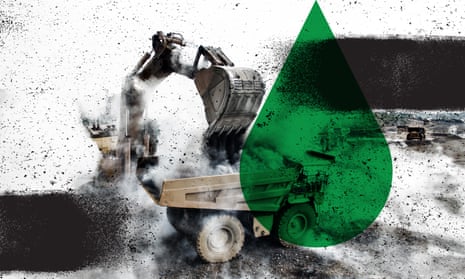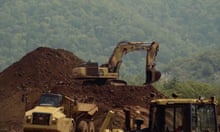Thirteen journalists who were investigating damage to the environment have been killed in recent years and many more are suffering violence, harassment, intimidation and lawsuits, according to a study.
The Committee to Protect Journalists (CPJ), which produced the tally, is investigating a further 16 deaths over the last decade. It says the number of murders may be as high as 29, making this field of journalism one of the most dangerous after war reporting.
On every continent reporters have been attacked for investigating concerns about abuses related to the impact of corporate and political interests scrambling to extract wealth from the earth’s remaining natural resources.
These resources end up in all manner of products – from mobile phones to pots and pans – with consumers largely unaware of the stories behind them.
The study was produced for Green Blood, a reporting project whose aim is to continue the reporting of local environmental journalists who have been forced to abandon their work.

Led by Forbidden Stories, a group of 15 media partners, including the Guardian, El País and Le Monde, have come together to shine an international light on the way these activities affect local environments and communities.
Last year, the consortium published an investigation into the murder of Daphne Caruana Galizia. The latest project comes amid repeated warnings of an environmental emergency caused by climate change, which further increases the pressure on already scarce resources.
“Environmental issues involve some of the greatest abuses of power in the world and some of the greatest of concentrations of power in the world,” said Bruce Shapiro, the director of the Dart Center for Journalism and Trauma.
“I’m hard put to think of a category of investigative reporters who are routinely dealing with more dangerous actors. Investigative reporting on the environment can be as dangerous a beat as reporting on narco smuggling.”
The CPJ executive director, Joel Simon, added: “Reporting such stories for national and international media often involves travelling to remote communities and confronting powerful interests. This makes it inherently dangerous.
“This is not a new issue, but it has become more acute as climate change has accelerated and environmental change more directly impacts people’s lives. I don’t see that changing any time soon, which is why it is so important to report on environmental issues despite the risk.”
Green Blood has focused on the mining industry, with reports from different countries starting on Tuesday.
While the journalists identified by CPJ have not been killed in the chosen areas, the behaviour of the police and state security forces has deterred reporters from raising the concerns of local people, meaning there can be an effective news blackout.

Over eight months, the Green Blood partners worked with local reporters to gather documents and witness accounts and conduct scientific tests to identify pollution.
The first investigation concerns a Tanzanian mine where journalists trying to investigate its activities and relationships found themselves harassed and their stories spiked following pressure from police and state authorities. Reporters have lost their jobs and two newspapers were shut down.
The allegations concern villagers being displaced and shot dead by police and security guards. A number of women have spoken of being raped by guards.
The second report features a nickel mine. Global demand for this mineral is high because it is used in stainless steel cookware and surgical instruments. Its value is expected to rise exponentially because of its use in eco-friendly electric cars, helping push up prices for all nickel producers.
However, hundreds of indigenous Mayan families are paying a high price for its production in Guatemala. They have complained of evictions, criminal prosecutions and water shortages.
Reporters raising the alarm have been held under house arrest and forced into hiding to avoid prison.
The consortium has also been to south India, where sand mining is a multibillion-dollar industry. Minerals removed from beaches are used in everything from cosmetics to robotics.
India is one of the most dangerous places to be a journalist – three of the 13 identified as having been killed in the course of their work since 2009 were from the country. Three more were based in the Philippines. The others died in Panama, Colombia, Russia, Cambodia, Myanmar, Thailand and Indonesia.
Ramesh Bhushal, project manager with the organisation Earth Journalism, said menaces kept vital information hidden from the public. “What happens is that the journalists are discouraged from writing about those serious issues, and they end up writing about other issues that are easier to cover and they don’t get threats for.”
Tanzania has slipped 25 places on the World Press Freedom Index produced by Reporters Without Borders (RSF), where it ranks 118th out of 179 countries.
“Journalists [in Tanzania] are attacked without reason,” Ryan Powell, a media development specialist working in east and west Africa, told Forbidden Stories. “Police will harass journalists, and people do not interfere.”
In south and central America, indigenous reporters are particularly at risk. Guatemala is 116th in the RSF index. Its president, Jimmy Morales, elected in 2016, made a commitment to introduce a national mechanism for the protection of the media soon after winning power, but the initiative has yet to be endorsed by the ministry of the interior.









